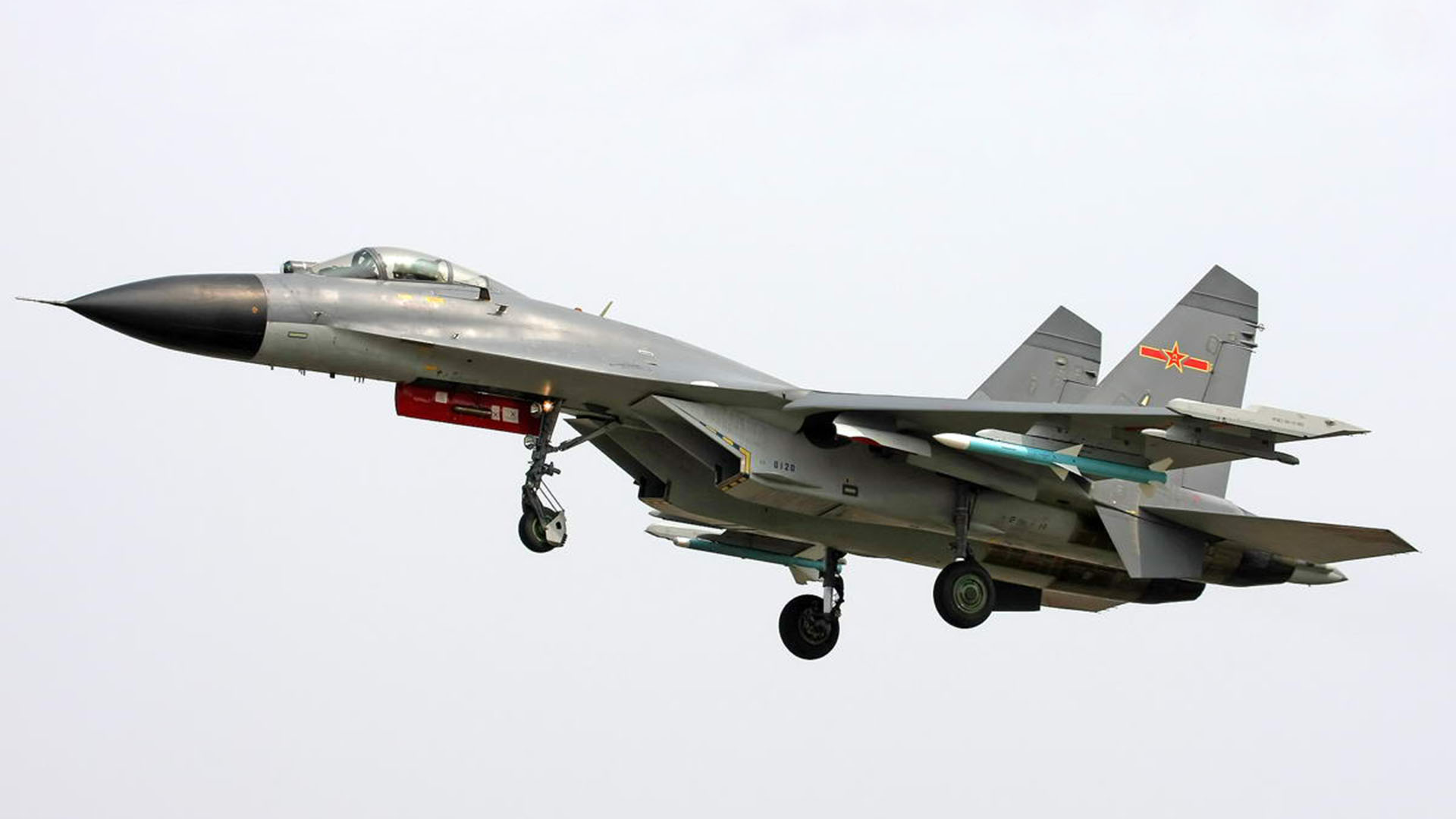China sent formations of Chengdu J-10 and Shenyang J-11 fighters into the Taiwan Strait earlier today. The aircraft crossed the median line that separates the highly sensitive channel for a brief period of time, according to local reports. The line acts as an unofficial airspace boundary between the mainland and the island. The flights came after the arrival of U.S. Health and Human Services Secretary Alex Azar in Taiwan on Sunday at the start of a nearly unprecedented high-level visit.
The show of strength from Beijing occurred shortly before Azar met with Taiwan’s president, Tsai Ing-wen, and the U.S. diplomat pledged “strong support and friendship” from Washington. The activity by the People’s Liberation Army Air Force (PLAAF) fighters drew the following statement from Taiwan’s Ministry of National Defense. “PLAAF jets’ deliberate intrusion and destruction of the current situation in the Taiwan Strait have seriously undermined regional security and stability.”
The J-10 and J-11 fighters briefly flew on Taiwan’s side of the narrow strait at approximately 9.00 am local time (01.00 GMT). The Chinese fighters were also tracked by Taiwan’s land-based anti-aircraft missiles, Taiwan’s Ministry of National Defense said, before being “driven out” by Taiwan’s Air Force. We have yet to hear Beijing’s version of these events.

Azar’s arrival marks the highest-level U.S. official visit to Taiwan in four decades, and it comes amid deteriorating American relations with China. Beijing condemned the visit which comes as part of a significant shift in U.S. foreign policy towards Taiwan under the Trump Administration. China also promised some sort of unspecified retaliation to Azar’s diplomatic mission.
This incursion is the latest in a series of military displays from both Taipei and Beijing. Earlier this week, Taiwan launched F-16s armed with live AGM-84 Harpoon anti-ship missiles on patrols ahead of expected Chinese exercise drills in the South China Sea. The U.S. has also been engaged in high-tempo surveillance missions and exercises in the area, including operating alongside Australia and Japan, the details you can read more about here.
The People’s Republic of China views Taiwan as a rogue province and both political and military tensions have increased significantly between the island and the mainland in recent years. The Trump administration’s trade war with China, its willingness to arm Taipei with advanced weaponry, among a number of other disputes, including those related to the ongoing COVID-19 pandemic, have resulted in an even deeper chill in U.S.-China-Taiwan relations. This highly-significant diplomatic visit to Taiwan by a senior U.S. official has predictably raised Beijing’s ire even further and authorities on the island have mobilized their forces in kind. Taiwan’s Air Force no doubt remains on high alert to react to any hostile activities, especially throughout the duration of this high profile U.S.-Taiwan diplomatic engagement.
We will update this post as more information comes available.
Author’s note: Hat tip to Alert5.com for the early warning on this story.
Contact the author: jamie@thedrive.com
